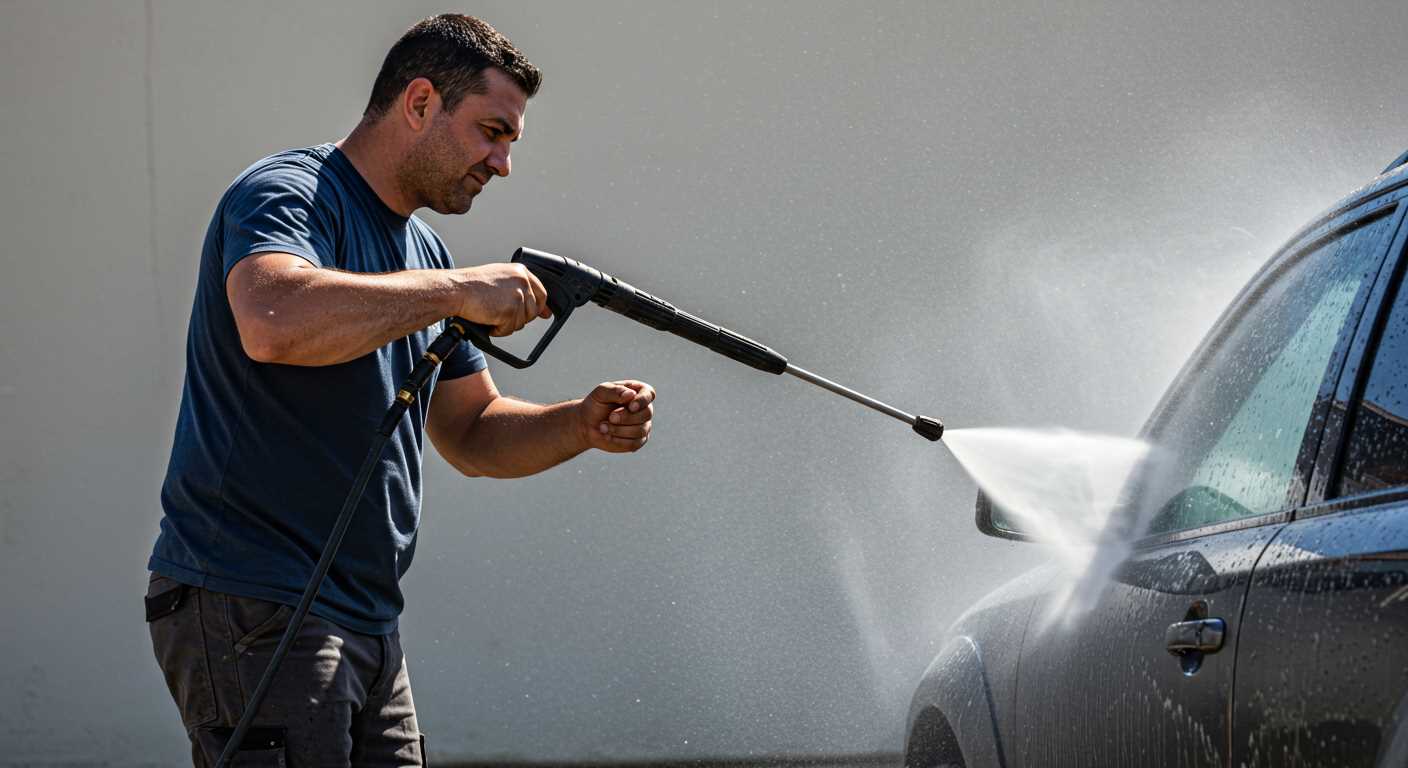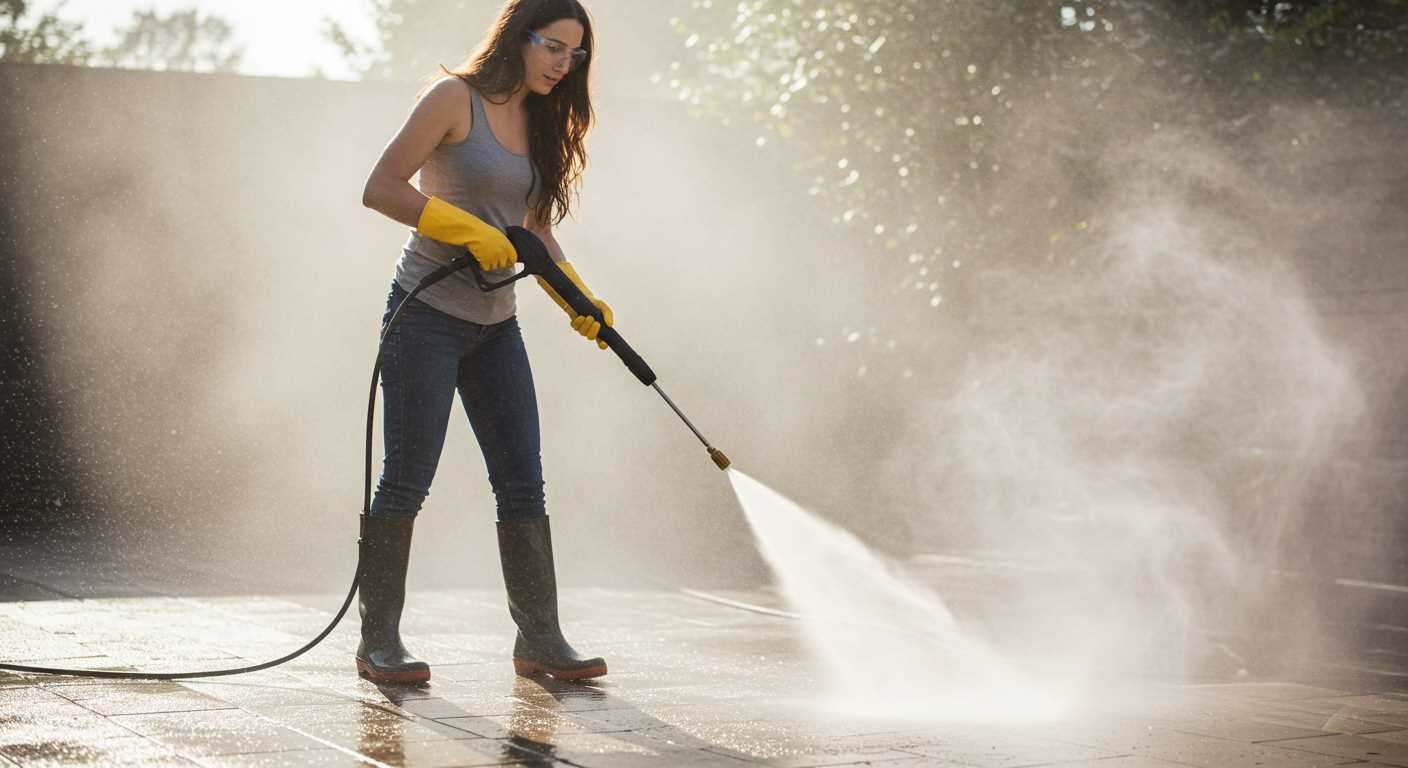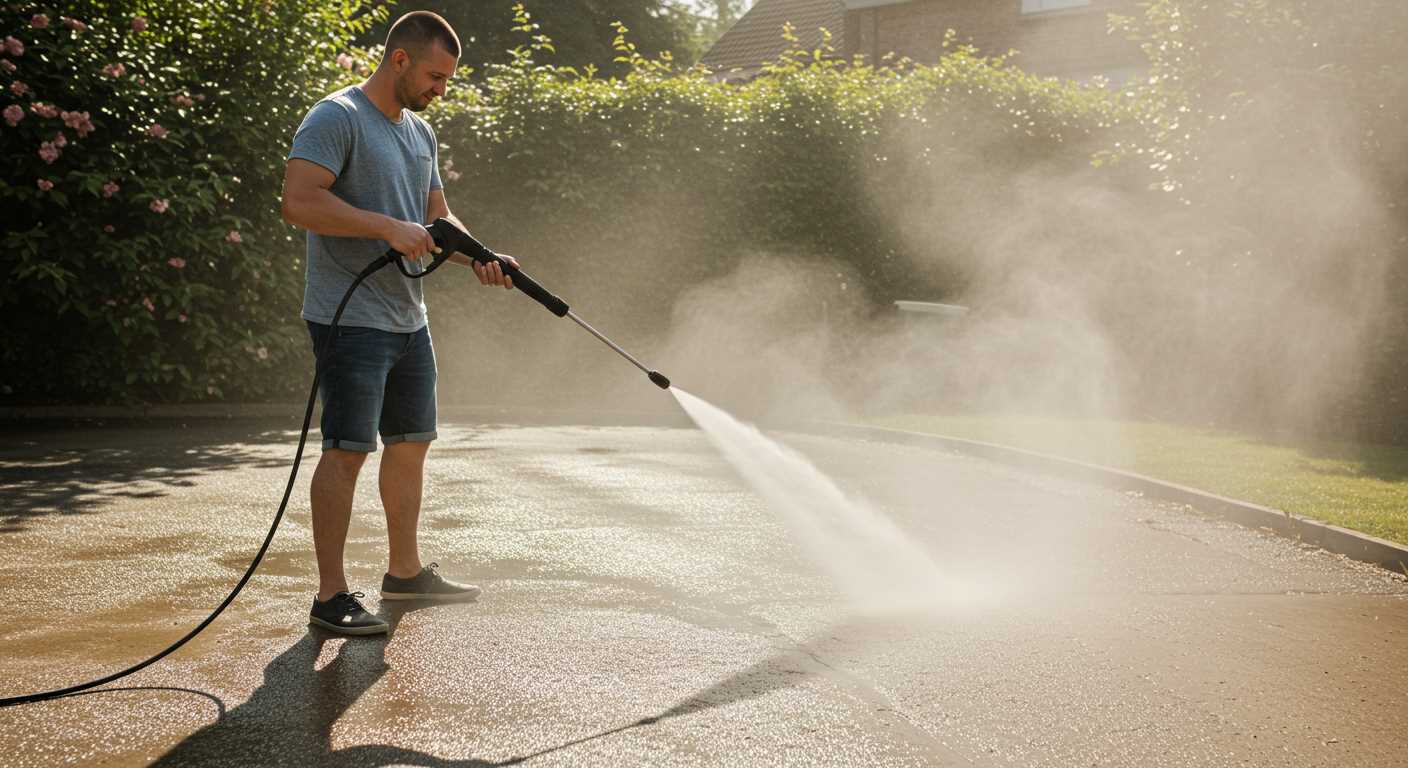

Start with a model that offers a minimum of 1500 PSI for residential tasks. This level of power is adequate for most home surfaces like driveways, decks and patio furniture. If you have tougher jobs, such as stripping paint or cleaning vehicles, consider options that deliver 3000 PSI or more.
For convenience, opt for electric units if you value quiet operation and minimal maintenance. They are ideal for light to medium tasks and are easy to manoeuvre. If you need something more robust and require portability, a gas-powered alternative provides greater mobility and stamina for extensive jobs.
Don’t overlook the importance of accessories. A rotating brush or turbo nozzle can significantly enhance cleaning performance by increasing efficiency. Also, a longer hose allows you to cover larger areas without constantly moving the unit.
Lastly, assess the brand reputation and warranty. Established manufacturers typically offer better customer support and quality assurance. Look for machines with at least a 2-year warranty to ensure durability and peace of mind.
Understanding pressure washer classifications: electric vs gas
For most residential jobs, an electric model is a solid choice due to its ease of use and lower maintenance. These units are generally lighter and quieter, making them perfect for basic cleaning tasks like washing cars or light patio cleaning. When selecting an electric option, pay attention to the PSI, which ideally should be at least 1300 to 2000 for effective cleaning of surfaces without damage.
If heavy-duty tasks are your focus–such as cleaning driveways or decks–consider a gas-powered alternative. These machines provide higher PSI and GPM ratings, typically ranging from 2500 PSI to 4000 PSI, which translates to quicker and more powerful cleaning. However, gas units are heavier, noisier, and require more upkeep. Look for features like an electric start to make operation simpler, especially if you’re dealing with larger jobs.
Electric models usually come with lower costs and are suitable for users who need a unit for light to medium tasks. Gas models, while pricier upfront, can tackle tougher projects efficiently. Ensure you consider the specific cleaning tasks and conditions you expect before making your decision. Balancing convenience with power will guide you to the most suitable choice for your needs.
Assessing the Power Requirements for Your Cleaning Tasks

To effectively choose the right equipment, establish the cleaning intensity you require. For light-duty household tasks, models with around 1300 to 1600 PSI are sufficient. These are perfect for washing cars, windows, and patios. Transitioning to moderate projects, like cleaning decks or driveways, demands more power. Aim for units offering 2000 to 2800 PSI, which will tackle tougher grime and stains.
Understanding GPM and Its Impact
Additionally, consider gallons per minute (GPM) ratings, which denote flow rate. Higher GPM values yield quicker cleaning by applying more water pressure. For residential use, a GPM of 1.2 to 2.5 is typically adequate. Therefore, for swift results on sizeable areas like driveways, choose a higher GPM value combined with PSI for maximum efficacy.
Balancing Power with Efficiency
Assess the balance between power and energy consumption, especially if opting for electric units. These machines usually operate with lower PSI while maintaining good efficiency, making them suitable for regular use without incurring high electricity costs. Evaluate your cleaning frequency alongside the equipment’s specifications to ensure you select a model that meets your operational needs without excess expenditure.
Choosing the Right PSI and GPM for Your Needs

To select the ideal PSI (pounds per square inch) and GPM (gallons per minute) for your cleaning tasks, it’s critical to align these specifications with the surfaces you intend to clean. Here’s a clear breakdown:
| Surface Type | Recommended PSI | Recommended GPM |
|---|---|---|
| Soft surfaces (carpets, fabric) | 500 – 800 | 1.0 – 2.0 |
| Wood decks, siding | 1200 – 1500 | 2.0 – 2.5 |
| Concrete, brick driveways | 2000 – 3000 | 2.5 – 3.0 |
| Heavy-duty tasks (graffiti, oil stains) | 3000+ | 3.0+ |
A balance of PSI and GPM ensures effective cleaning. High PSI can damage delicate surfaces, while low GPM might prolong the task. For instance, when cleaning a wooden deck, I aim for a PSI between 1200 and 1500 with a GPM of 2.0 to 2.5 for optimal results. Conversely, for tougher surfaces like concrete, higher PSI and GPM are necessary.
Additionally, consider that electric machines generally offer lower PSI and GPM, making them suitable for residential use, while gas models provide superior pressure and flow for commercial tasks. Prioritise your cleaning needs and conditions–this will guide your selection effectively.
Identifying Essential Attachments and Accessories
To maximise the performance of your cleaning equipment, selecting the right fittings and supplementary tools is crucial. Start with a variety of nozzle tips; these adjust the spray pattern and intensity. A 0-degree nozzle delivers a concentrated stream ideal for tough stains, while a 40-degree nozzle spreads out the water for delicate surfaces. A multi-function nozzle offers flexibility for varying tasks, which I find very convenient.
Surface Cleaners and Extension Wands
Consider acquiring surface cleaners for flat surfaces such as driveways and decks. They reduce cleaning time significantly and provide consistent results. Extension wands are also beneficial; they allow you to reach high places without the need for ladders, extending your capabilities without compromising safety. These attachments make completing your tasks easier and more efficient.
Brushes and Detergent Tanks
Specialised brushes enhance cleaning for specific applications. For instance, a rotary brush works wonders on vehicles, while a stiff-bristled brush is perfect for stubborn surfaces. Additionally, a detergent tank or siphon adds versatility by enabling the application of soaps or cleaners during the washing process. This combination not only speeds up the cleaning but also improves the overall results.
Evaluating Brand Reliability and Customer Support
Focus on established manufacturers known for durability and performance. Research customer reviews and ratings on platforms like Amazon or consumer forums to gauge satisfaction. Brands with a long history in manufacturing outdoor cleaning equipment, such as Karcher, Ryobi, or Honda, typically have a good track record.
Pay attention to warranty offerings. A longer warranty period often indicates confidence in product longevity. Look for companies that provide at least a two-year warranty, which can also reflect their commitment to customer satisfaction.
Customer support quality is equally significant. Test their responsiveness by contacting them with questions. Reliable brands often have readily available support through multiple channels, including phone, chat, and email. Check for online resources such as user manuals and troubleshooting guides, which can be invaluable when issues arise.
Consider the presence of local service centres. Access to technicians for repair or maintenance adds peace of mind. Brands with an extensive dealer or service network tend to ensure quicker assistance if needed.
Finally, if possible, join online communities or forums related to cleaning equipment. Engaging with other users can provide insight into real-life experiences with specific brands and models, guiding your decision beyond mere specifications.
Considering your budget and long-term investment

Allocate your resources wisely by determining a budget that accommodates both upfront costs and future needs. Products vary significantly in price, with electric models often starting around £100 and gas variants reaching upwards of £500. Set a clear financial limit that reflects both the quality you seek and frequency of use.
Invest in durability
Focus on robustness and expected longevity. A cheaper model may seem appealing but often incurs costs through repairs or replacements. Look at warranties and customer feedback to gauge reliability. Brands offering extensive warranties generally correlate with higher quality.
Long-term savings
.jpg)
- Electric units usually have lower operational costs, including maintenance and electricity. Consider the overall energy consumption versus fuel costs of gas-powered options.
- Factor in the cost of accessories and additional attachments, which can enhance usability. Spending on tools that improve efficiency will yield savings over time.
- Evaluate the resale value. Premium units tend to maintain their worth better than budget brands, allowing you to recover some investment should you choose to upgrade later.
Choosing wisely based on your financial landscape ensures you secure a unit that serves you well now and in the future. Avoid impulsive decisions; instead, analyse and foresee your long-term cleaning requirements.
FAQ:
What are the different types of pressure washers available?
Pressure washers fall primarily into three categories: electric, petrol, and diesel. Electric pressure washers are typically lighter and more suitable for small to medium cleaning tasks like patio or car cleaning. Petrol pressure washers are more powerful and suitable for heavy-duty jobs, making them ideal for larger areas and tougher stains. Diesel pressure washers are mainly used in commercial settings for high-demand cleaning because of their force and endurance. Each type has its own advantages depending on the specific cleaning needs you have.
How do I determine the right pressure rating for my needs?
The pressure rating is measured in PSI (pounds per square inch) and is crucial for determining how well a pressure washer can tackle various tasks. For light-duty jobs like washing cars or garden furniture, a machine with 1300-1900 PSI should suffice. For medium tasks like cleaning driveways or patios, consider a model between 2000-3000 PSI. Heavy-duty applications, such as stripping paint or cleaning large areas, will typically require 3000 PSI or more. Knowing the specific tasks you want to perform will greatly help you select the right pressure rating.
What features should I look for in a pressure washer?
When selecting a pressure washer, consider features such as adjustable nozzles, which allow you to change the spray pattern for different tasks. Look for durability in the hose and wand materials, as well as a sturdy frame that can withstand regular use. Wheels are also important for mobility, especially for larger machines. Additionally, consider if you need a detergent tank for added cleaning power, or if a long power cord and hose will enhance your reach during cleaning sessions. Each feature contributes to the overall performance and convenience of the pressure washer.
Is it worth investing in a more expensive pressure washer?
Investing in a higher-priced pressure washer often pays off in terms of performance and durability. More expensive models typically offer higher PSI ratings, better construction, and longer warranties. They may also come equipped with additional features that enhance usability and versatility. If you plan to use the pressure washer frequently or for more demanding jobs, a higher-quality machine can save you money in repairs and replacements in the long run. However, it’s important to assess your specific cleaning needs to find a balance between cost and capability.








